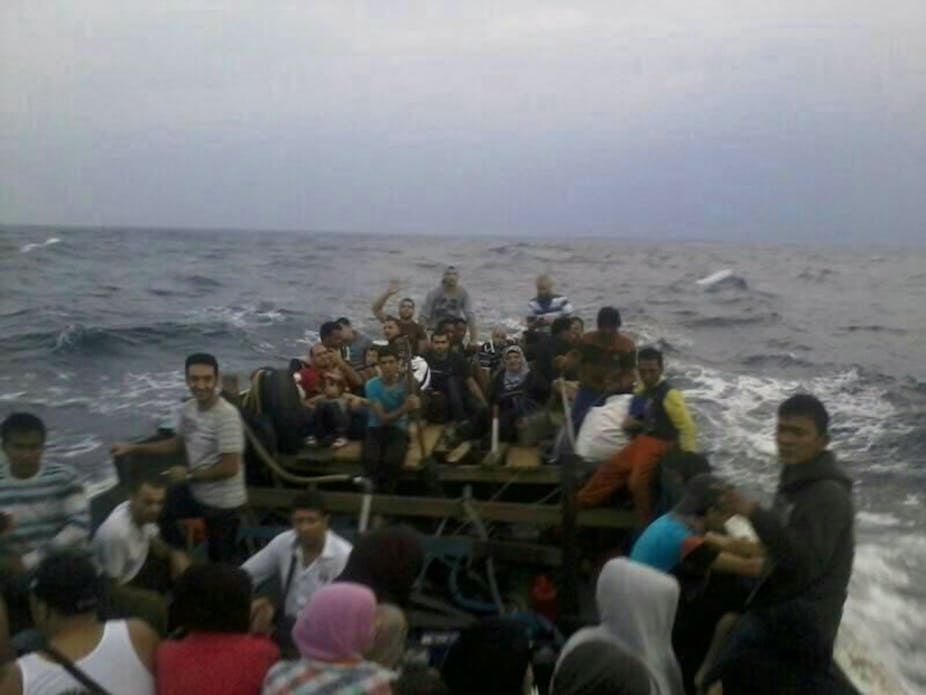How to deal with the impact of climate change is front and centre at international climate talks in Warsaw, with a fund for “losses and damages” caused by climate change to developing nations on the table. As climate action shifts away from mitigation to adaptation, we need to look at all the options.
One option will be planned migration: helping people affected by climate change to reach new homes in other nations. But such a solution is unpalatable for a number of reasons.
Bangladesh: climate change hotspot
Bangladesh — a low-lying developing nation extremely vulnerable to climate change — is often cited as the prime candidate for climate migration, but what might this look like?
Bangladesh emerges out of the lands that interweave with the Ganges Delta, making it a highly fertile area. These low lying deltas constitute both the means of survival for Bangladeshi people and their exposure to extensive seasonal flooding. This unique geography also makes it a hotspot for climate change.
Bangladesh is no stranger to difficult environmental conditions, but the increased frequency and severity of weather events due to anthropocentric climate change means adaptive capacity and local resilience are wearing thin. This is especially so in regions where damage such as river erosion and rising sea levels are causing irreversible impact.
Acknowledging this predicament, international climate change discussions have turned toward the framework of “loss and damages”. This paradigm highlights a shift away from mitigation and even adaptation (or at least recognises limitations of these approaches) towards compensation.
Dhaka in Bangladesh, a megacity of 15 million, is expected to reach 40 million by 2050. The slums of Dhaka house a constant influx of internal migrants arriving from climate-affected regions.
Rapid urbanisation, as a result of the massive migration from rural to urban regions, is expected only to increase. This issue is compounded by local political and economic exploitation of workers, ongoing evictions and corrupt land deals making the lives of “slum dwellers” precarious.
In an ideal world, solutions for adapting to climate change would be found within a country. But, considering the catastrophic impacts nations like Bangladesh face, more drastic solutions need to be found. One of these could be international migration, or what has been called “migration as adaptation”.
Why migration is a tough sell
There are several (complex) reasons why migration has been sidelined in international climate talks.
First, there are practical and conceptual difficulties. Migration has many causes, and it is very difficult to pinpoint climate as the definitive driver. Migration can be an economic opportunity or forced displacement, voluntary or coerced.
Before we can even think about using migration as a solution to climate change, we need to decide how to distinguish between these categories, and what protection to give each.
Second, migration has become unrelentingly “securitised”: it is framed as a threat to national sovereignty. This places national interests over potential global solutions.
In a recent article on The Conversation, Athol Yates suggests treating climate change the same way we treat asylum seekers: as a threat to national security. This would allow climate change to be dealt with “using emergency methods”.
But this is dangerous thinking, because it reiterates the use of exclusion techniques, extending a “stop the boats” logic towards all peoples making unplanned journeys across the seas.
Migration matters do not need further securitisation. Instead, they need an ethic of hospitality, however conditional this might be. If securitisation is to be truly useful, it needs to include “human security”, that is, concern and protection of vulnerable human lives left insecure as a result of climate change.
Third, we’re still dealing with a legacy of environmentalist campaigns in the 1980s and 1990s, which proclaimed a “flood” of climate “refugees”. This has contributed to a misunderstanding of the issue. Slowly, we’re beginning to understand how, when, and why people move, but we need to communicate this to a fearful public.
While figures of climate-driven displacement and migration vary wildly, there is little disagreement over the fact the issue is real and urgent. The International Organisation for Migration notes that 200 million environmental migrants is the most commonly cited prediction by 2050. The possibility of this future should give us pause to consider more humane and ethical alternatives before we reach the point of declaring climate change a national emergency.
So back to Bangladesh. International migration, or as Dr Atiq Rahman of the Bangladesh Centre for Advanced Studies has put it “planned migration”, has the potential to alleviate some of the urban and rural stresses facing Bangladesh.
Climate debate has shifted from “mitigation” to “adaptation” and now to “losses and damages”. Planned migration now needs to be a part of this debate. In this sense, hospitality to affected countries from the industrial countries responsible for climate change must be seen as either a mode of adaptation or a form of compensation for profound losses and damages caused by climate change.

